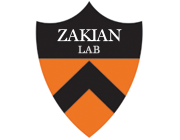Mitotic and meiotic stability of linear plasmids in yeast.
Publication Year
1983
Type
Journal Article
Abstract
Circular recombinant DNA plasmids that contain autonomously replicating sequences (ARSs) are maintained in extrachromosomal form in transformed yeast cells. However, these plasmids are unstable, being rapidly lost from cells growing without selection. Although the stability of such a plasmid can be increased by the presence of yeast centromere DNA (CEN), even CEN plasmids are lost at a high rate compared to a bona fide yeast chromosome. Natural yeast chromosomes are linear molecules; therefore, we have asked if linearization can improve the stability of recombinant DNA plasmids. Linear plasmids with and without yeast CENs were constructed in vitro by using termini from the extrachromosomal ribosomal DNA (rDNA) of the ciliated protozoan Tetrahymena thermophila as "telomeres." These linear plasmids transformed yeast at high frequency and were maintained as linear extrachromosomal molecules during mitotic growth. Moreover, linear plasmids containing CENs were also transmitted through meiosis: these plasmids segregate predominantly 2+:2- at the first meiotic division, indicating that Tetrahymena rDNA termini can provide telomere function during yeast meiosis. Linear plasmids without CENs were about as stable in mitosis as the comparable circular plasmid. Thus, the Tetrahymena rDNA termini have no marked positive or negative effect on the mitotic stability of ARS plasmids. However, linear plasmids containing CENs are three to four times less stable in mitotic cells than circular CEN plasmids. This decrease in stability is not due to a functional change in the centromere itself; rather, linearization of a CEN plasmid has a direct detrimental effect on its mitotic stability. These results may reflect the existence of spatial constraints on the positions of centromeres and telomeres, constraints which must be satisfied to achieve stable segregation of chromosomes during mitosis.
Keywords
Journal
Proc Natl Acad Sci U S A
Volume
80
Issue
11
Pages
3406-10
Date Published
06/1983
ISSN Number
0027-8424
Alternate Journal
Proc. Natl. Acad. Sci. U.S.A.
PMID
6344082

